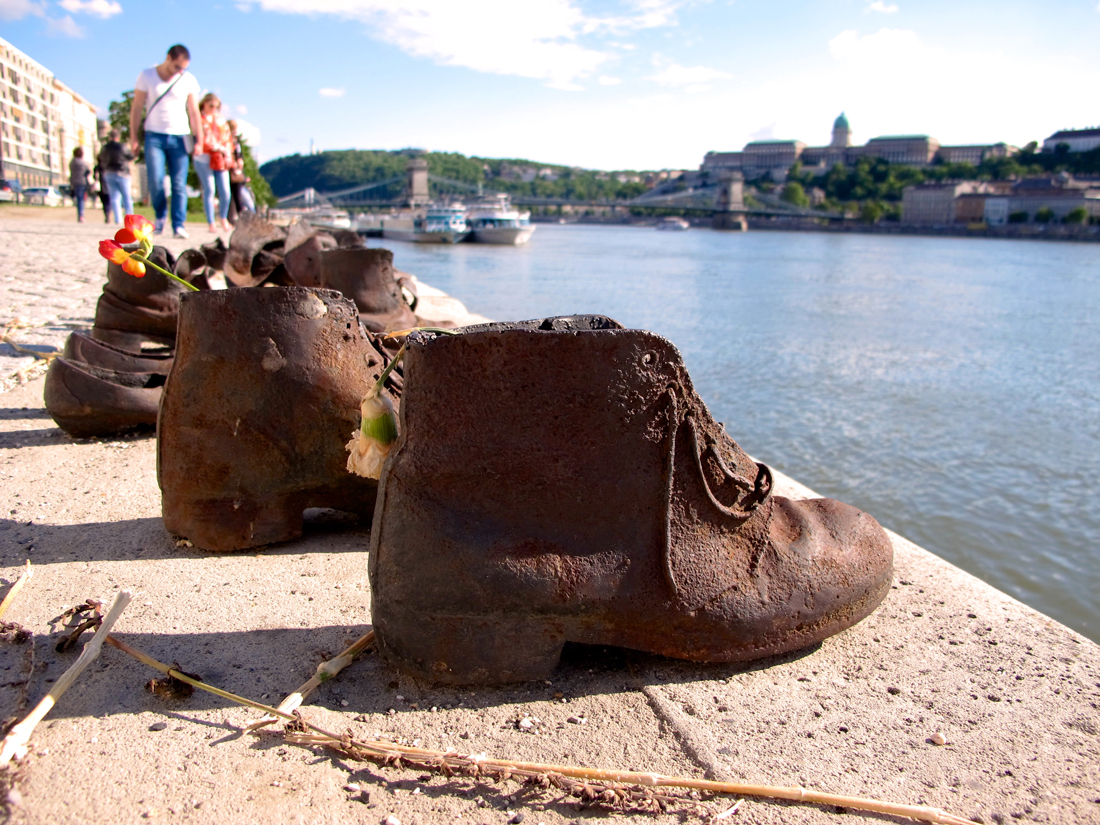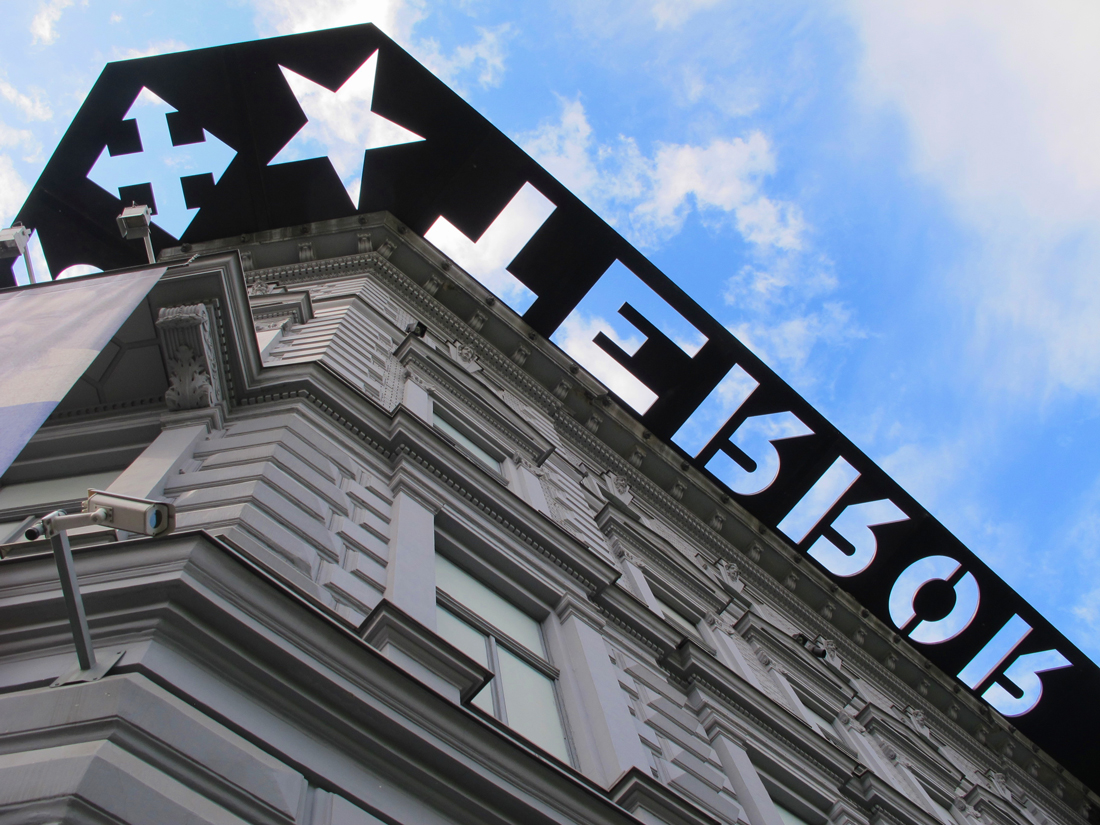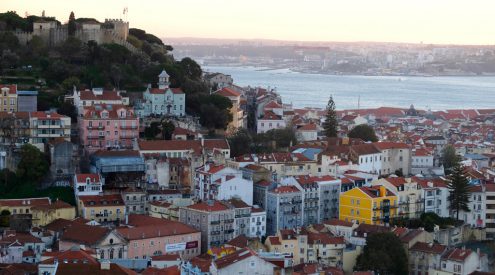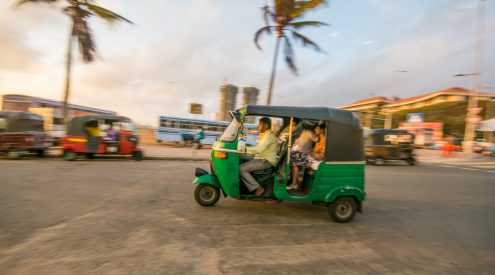Travel guides and other media tend to paint Budapest as this throwback to a bygone era, but it’s Budapest’s vibrant reinvention that gives it its true edge. This enticing, uplifting and beautiful capital is also one of the most affordable cities in Europe. Here’s what to do when you get there.
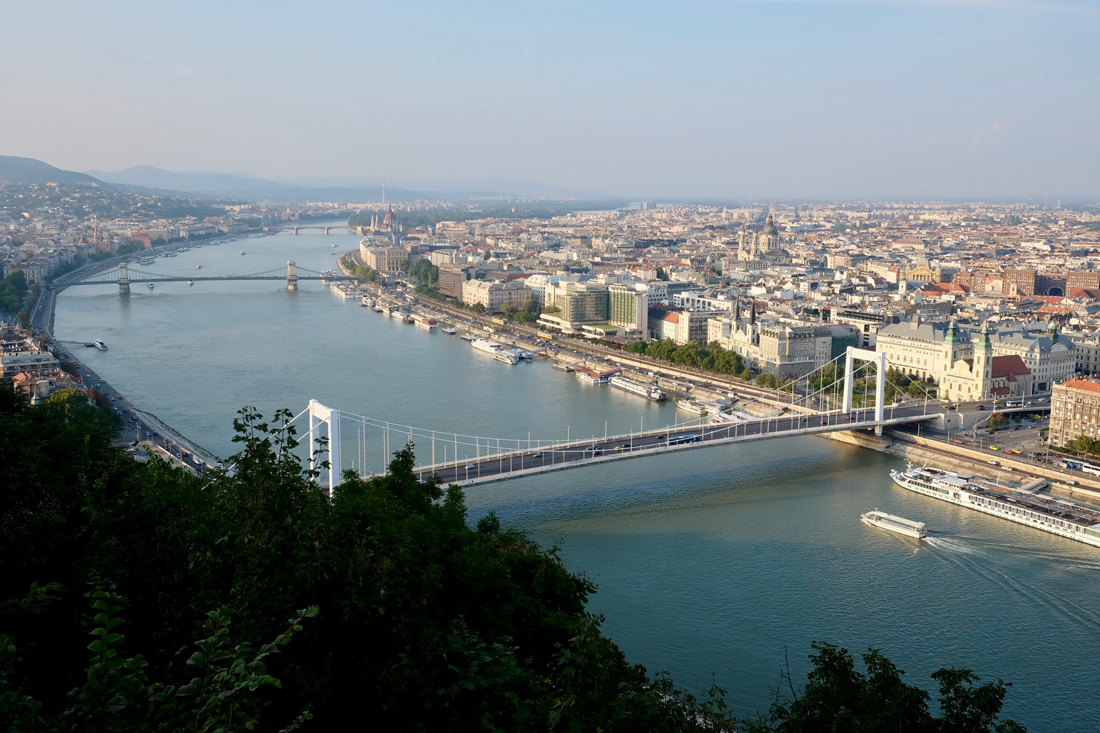
The view of Buda and Pest, separated by the Danube, from Gellért Hill.
At some point during your trip to Budapest you might stop and wonder how you can be having so much fun in a European capital and not be spending mountains of cash. With prices running into the thousands (of Hungarian Forints) it’s easy to think you’re spending a fortune. Chance are, though, you aren’t. This is one of the best value destinations on the continent, and no matter how hard you try, it’s almost impossible to blow the budget.
Also read:
I returned to Budapest for the third time with some trepidation. The first two visits had cemented it as a favourite, but back then I had a local accomplice who held my hand as she showed me the ropes. This time, two years later, I was alone, and the tricky Third Visit would no doubt deliver healthy doses of self-reflection and nostalgia. But as I retraced my steps across the regal Chain Bridge and along the sparkling Danube on the warm autumn afternoon, constantly looking up at the impossibly grand Hungarian Parliament Building on the other side, I couldn’t help but smile that giddy kind of smile I only really feel comfortable doing when I’m alone in a foreign city.
Just two days prior to the embarrassing Danube-side smile I’d found myself haemorrhaging cash in Lucerne. The only acceptably priced dinner I could find in the city was one of those pre-packaged pathetically portioned supermarket salads – it cost me a hundred bucks. I ate it with the included plastic fork on the melamine counter of my horrendously priced three-star hotel room while looking out of the window at the wall of the neighbouring building two metres away. In the damp courtyard six floors below, a woman was FaceTiming someone at a volume that seemed to negate the need for a telephonic device altogether.
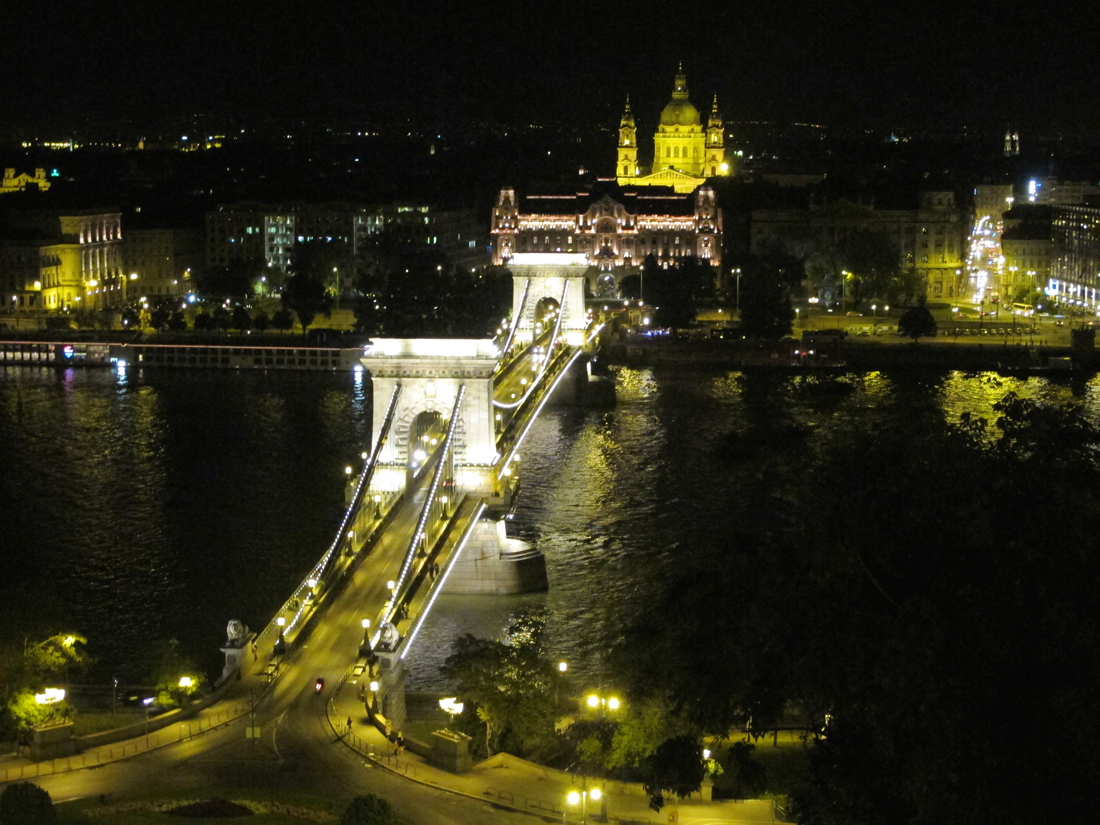
The Chain Bridge from Buda Castle seen at night.
As beautiful as Lucerne might be, I was finding it hard to justify the city’s drastic cost-benefit discrepancy. I opened up Google Maps and used the spurious reason that Budapest was on practically the same longitude as Lucerne to justify a return to the Hungarian capital. On whim I booked an apartment for five nights in Budapest – at the equivalent price of a single night in my mediocre Swiss hotel. Google also told me that there was a train leaving in that direction early the next morning, and, just like that, my third visit to the city became a reality.
Central versus Eastern
Budapest occupies an interesting position in Europe. Many Hungarians fiercely hang on to its Central European identity, seemingly terrified of the connotations of being a Balkan State; tourists, on the other hand, bask in the “Eastern European” charms but still revel in the comfort and safety that comes with being just a two-hour train ride away from Vienna.
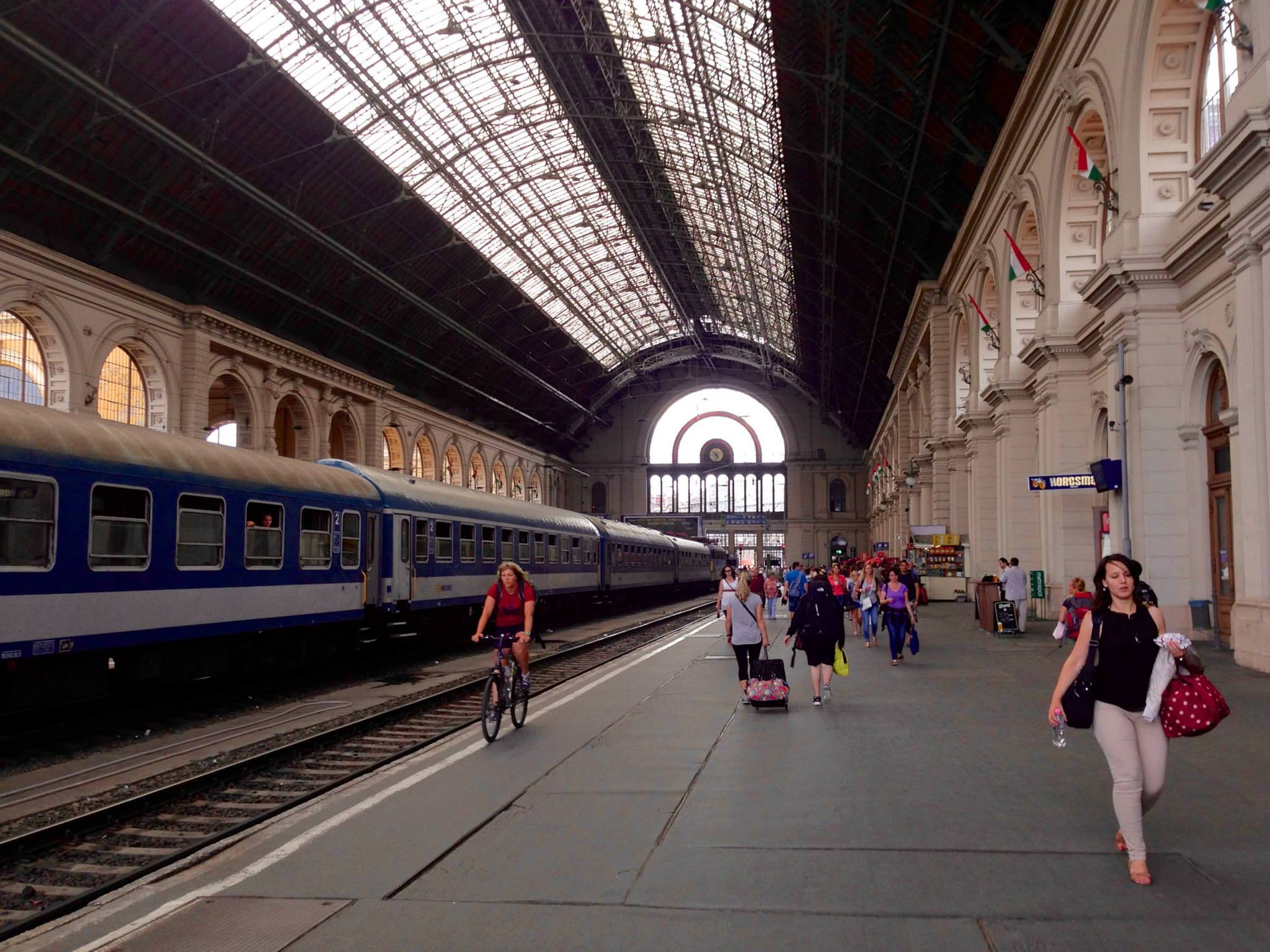
Budapest Keleti Railway Station.
Regardless of where you stand on the matter, the difference between Budapest and its neighbouring capitals is palpable. It may be just a short R400 train ride from the Austrian border, but it instantly feels like a world away. Language, cultural and architectural differences aside, you’ll feel an instant change in the trains – the glistening leather-seated Austrian RailJet train, on which I’d arrived, looked decidedly futuristic alongside the quaint carriages of the Hungarian Railway trains. And yet I knew from experience that this was far from the backwards goulash-eating town many visitors still want to paint it as. This was Budapest – possibly the most enticing, uplifting and beautiful capital on the continent.
I hopped off the train with return-city enthusiasm, strode towards the infamous (and spotless) metro station with the arrogance of familiarity, and then earned the sniggers of an entire carriage of young schoolgirls as I narrowly avoided the dramatic closure of the unforgiving metro doors.
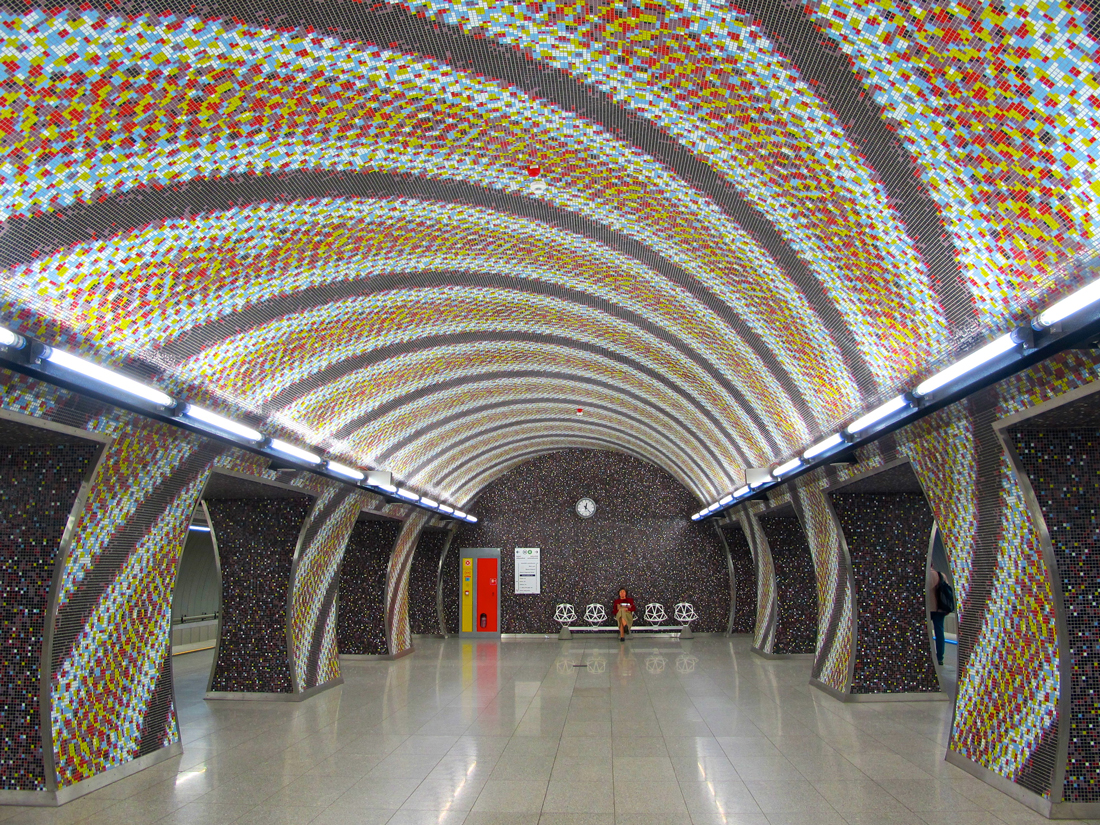
Budapest’s shiny (and relatively new) metro stop.
Where to stay in Budapest
A few minutes later I was shaking hands with the Airbnb host and assuring him I’d take good care of his apartment. There’s no shortage of accommodation in the capital. It ranges from glitzy vintage hotels with crystal chandeliers, to 24-hour party hostels with free vomit buckets. But you’d be a fool to choose either, because Airbnb is winning the battle for price, location and quality.
Book early enough and you’ll bag some amazing deals. My last minute Airbnb apartment was described as cosy, and they were right about that. It had the charm – and not much more space or natural light – than a converted broom cupboard. But they were also right about it being central – its location on Papnövelde Street put the Danube, several popular attractions and dozens of restaurants and bars just a short walk away. And at just more than R500 per night for the entire space, the price was right as well.
Where to eat in Budapest
I dropped my bag on the floor and considered my options. The night was young and my iPhone told me that Szimpla Kert – the city’s most popular ruin pub – was just a short walk away. I pulled a creased t-shirt out my backpack and walked the streets of Budapest in the direction of the bar and felt immediately satisfied at my decision to return.
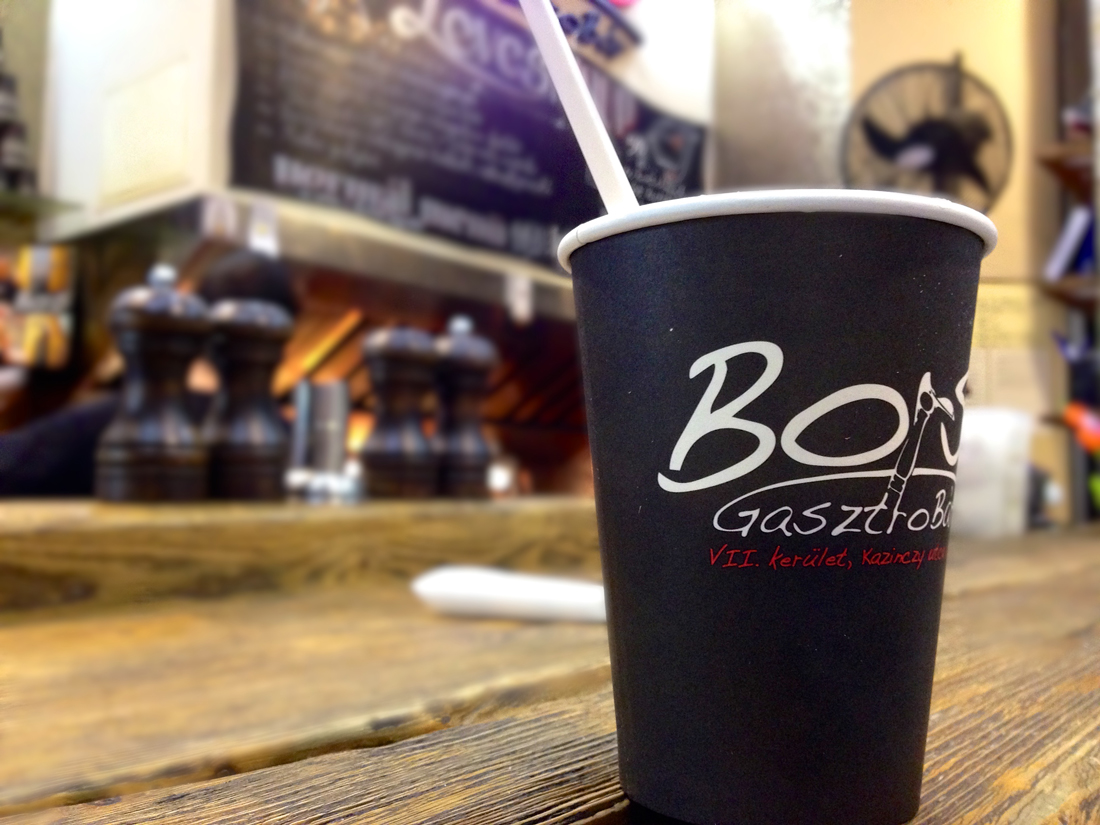
Bors is most likely the best soup and sandwich shop in town.
The city’s best soup and sandwich shop is Bors, where you can pick up a combo meal for about R60. It’s also conveniently located across the road from Szimpla Kert. The energetic team inside regularly whip up adventurous new flavours and combinations, including new takes on old classics (think goulash) and cold soups, or you can simply point at on the chalkboard menu and revel in the soupy surprise. There are only four bar stools inside, so your best option is to people-watch and eat perched on the back of their converted three-wheel car outside.
This isn’t the only high quality, well-priced food option in the city. There are food trucks on many of the city’s busier streets; some even have permanent food truck alleyways. Budapest is also brimming with creative hole-in-the-wall eateries that offer limited selections but unbeatable prices.
If you’re a fan of soup you should also make a turn at Leves. Their sister restaurant Pasta also makes a mean takeaway for just a handful of Hungarian Forints. Both attract queues several blocks long at peak times (usually weekday lunch thanks to the nearby university), but they move fast and are worth the wait. Burgers also abound, and you’ll no doubt bump into one of the Zing Burger food trucks as you pound the pavements. Most of the city’s best casual dining spots serve up acceptable meals at no more than R70.
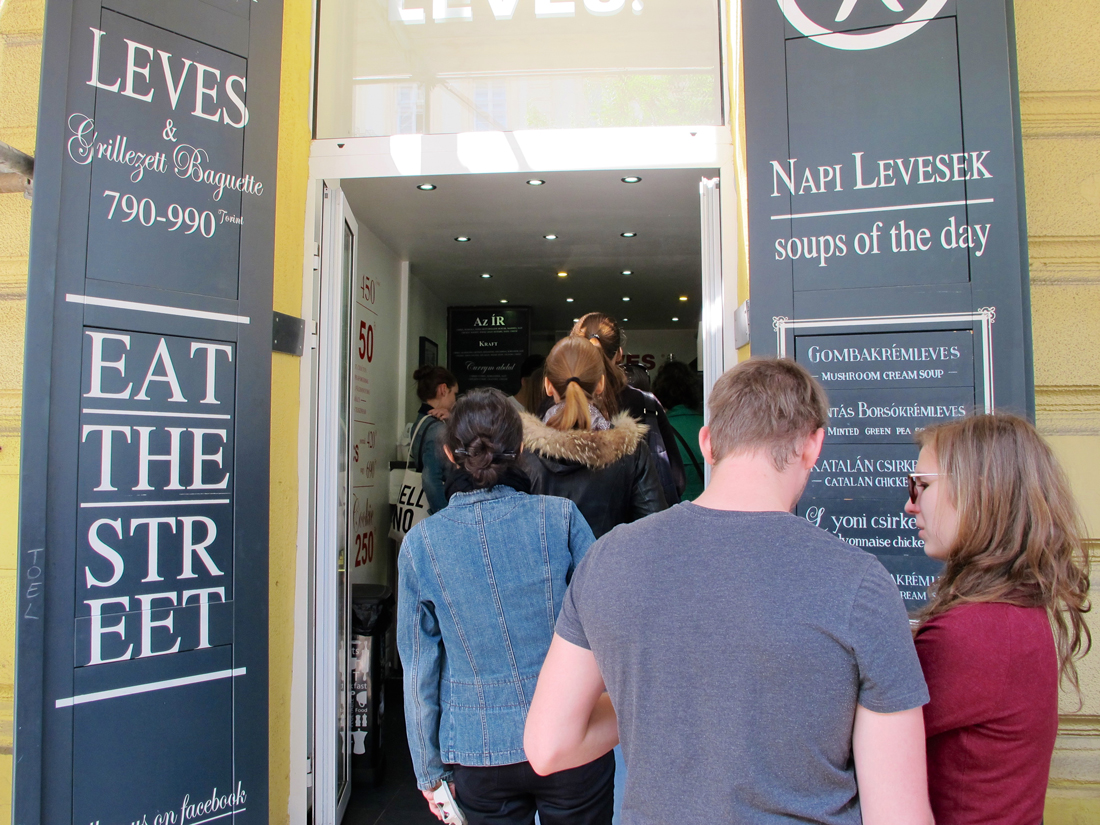
Queues outside Leves often stretch several blocks long at lunch hour.
Of course if you’re one of those travellers seeking some kind of authenticity, you can also venture into the Central Market Hall and order a Lángos. Otherwise duck into Mákos Guba Étterem in Buda – they’re no stranger to outsiders, but will serve up a poppy seed pasta, or chicken breast topped a full slab of melting camembert and a side of mashed potatoes, for just a few thousand forints (cheap). And unlike the establishments run by the city’s hippest, they probably won’t understand your English.
Where to drink in Budapest
I finished off my Bors combo meal alongside two strangers who were helping to counterbalance the uneven flatbed of the three-wheel car outside and then ventured into Szimpla. It was an old disused factory until, in 2002, a group of enterprising young boozers marched in and declared it a watering hole. Now it’s a beautifully chaotic bar that serves as the pinnacle of the city’s ruin pub scene.
Some will tell you it’s largely become a victim of its own popularity. It’s not uncommon to encounter loud British bachelor parties proudly ordering two-dozen Jägermeisters, or throngs of awkward 20-something Americans on those uncomfortable hostel pub crawls. But it’s also the kind of bar where you’ll find a smashed television set playing a test pattern in a dark corner, a rickety spiral staircase leading to a secret balcony bar, and an off-key Hungarian band in the corner hammering away at their fiddles to a confused but drunkenly enthralled crowd. And, more importantly, it’s the kind of bar that serves beers that seldom cost more than R25.
I met two young Australians amongst the madness of the swelling crowd and we drank too many cheap beers while pretending to care about each others’ travel stories. Eventually I realised that it was well past midnight, and so with plans to meet my two new friends the next day I headed off to try out the squeaky shin high mattress back in my AirBnb apartment.
Of course, being a nation of drinkers, Szimpla isn’t the only bar worth visiting in Budapest. There are slick rooftop establishments, dingy dive bars and dozens of quirky spots to keep practically any drinker satiated.
A few nights later I met a helpful young diplomat who took me on a circuit of her favourites – Telep, Központ and Fekete Kutya are all cheap and well worth a visit. Budapest just seems to do bars right – most are open-air and supremely laid-back, usually with rickety garden furniture, graffitied walls, and a semblance of a bathroom out back. And don’t forget the cheap booze. In other words, pretty much all you need to reflect on a day in the city.
Things to do in Budapest
Mornings in Budapest are often hungover and are best started with a coffee at one of the seemingly infinite number of trendy coffee shops. You won’t have to walk more than 10 minutes in Pest to find a bearded barista obsessing over a flat white, and it shouldn’t cost more than R30. Google is on the money when it comes to the best coffee shops in Budapest, but My Little Melbourne, Tamp and Pull and Madal are all worth visiting.

Tamp and Pull comes complete with bearded barista.
Days in Budapest are best spent walking along the Danube and across her dramatic bridges. Of all the famous European capital rivers, the Danube seems to sparkle the brightest.
When your legs tire, hop on one of the city’s shared bikes. The MOL BuBi bikes are the best way to get around the city which, provided you stay on the Pest side, is uniformly flat. The bikes are also free of charge provided you dock them again within 30 minutes, which is usually enough time to get you between popular sites.
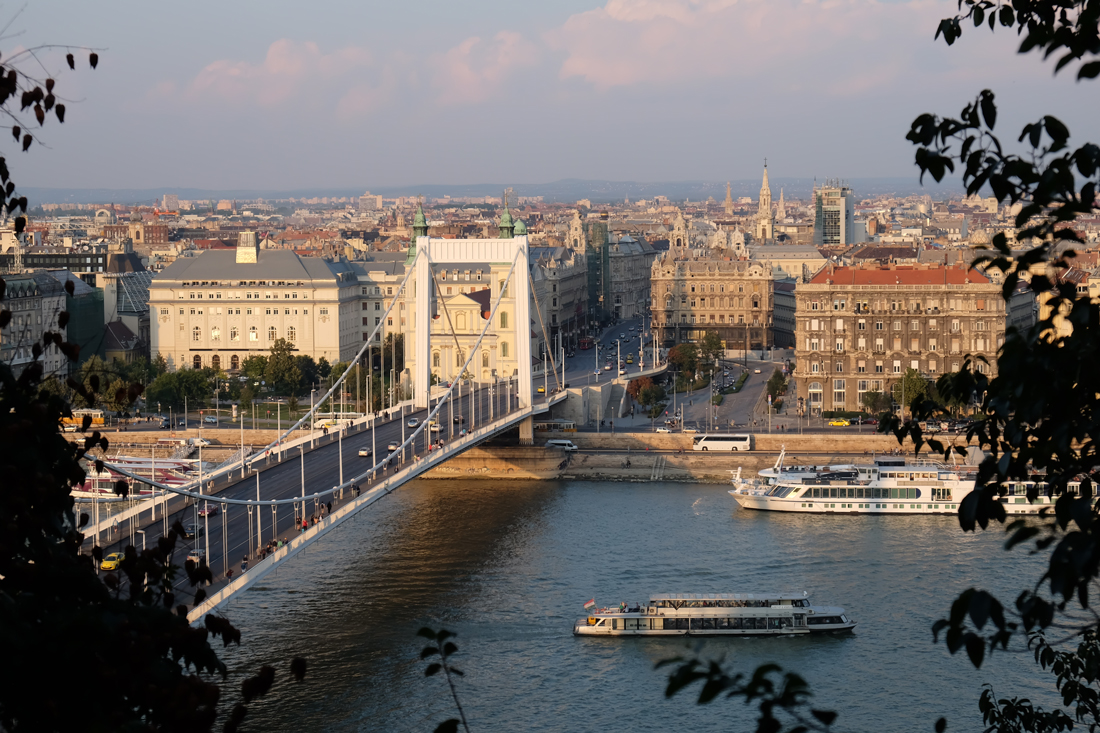
Elisabeth Bridge is one of Budapest’s newest and a joy to cycle or walk across
Also read: Why bike-share schemes are the best way to get around Europe
Free things to do
Like the bikes, most of the city’s top attractions also have a base level entry fee of zero, with optional paid top-ups. For example, you can walk the Buda Castle grounds for stunning views over Pest, particularly at sunrise or sunset, without paying a cent. If you’re looking for an upgrade, you could take a walking tour of the grounds or pop in to the Hungarian National Gallery. Though if you must pay for something, my money would be on the weird Hospital in the Rock Museum (R175), which walks you through a World War II military hospital tunnelled into the earth beneath your feet.
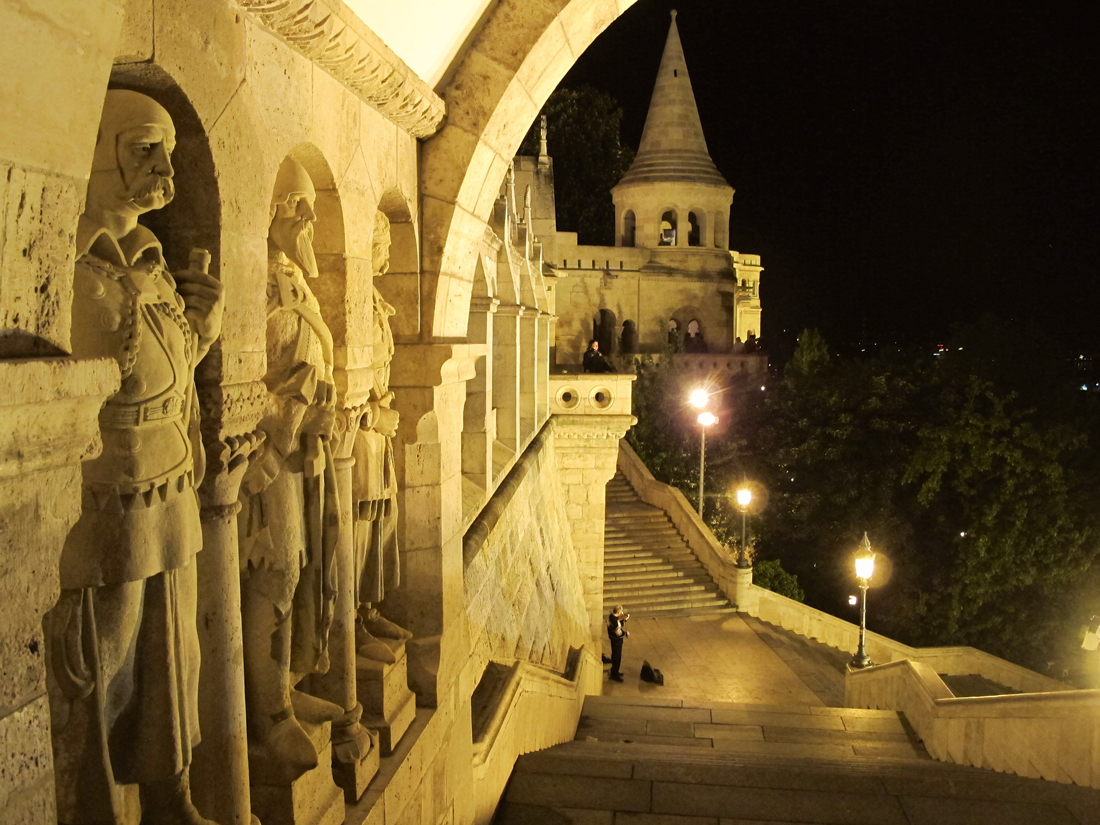
The atmosphere at Buda castle is particularly impressive at night.
The same is true for the famous Hungarian Parliament Building. Though it may just be the most impressive legislative building in the world, I’ve never felt the urge to enter. You can if you like, but when you lay eyes on it from across the river, it’s more likely you too will prefer to gawk at it from a distance. The city’s most moving monument, the Shoes on the Danube, is also located just outside.
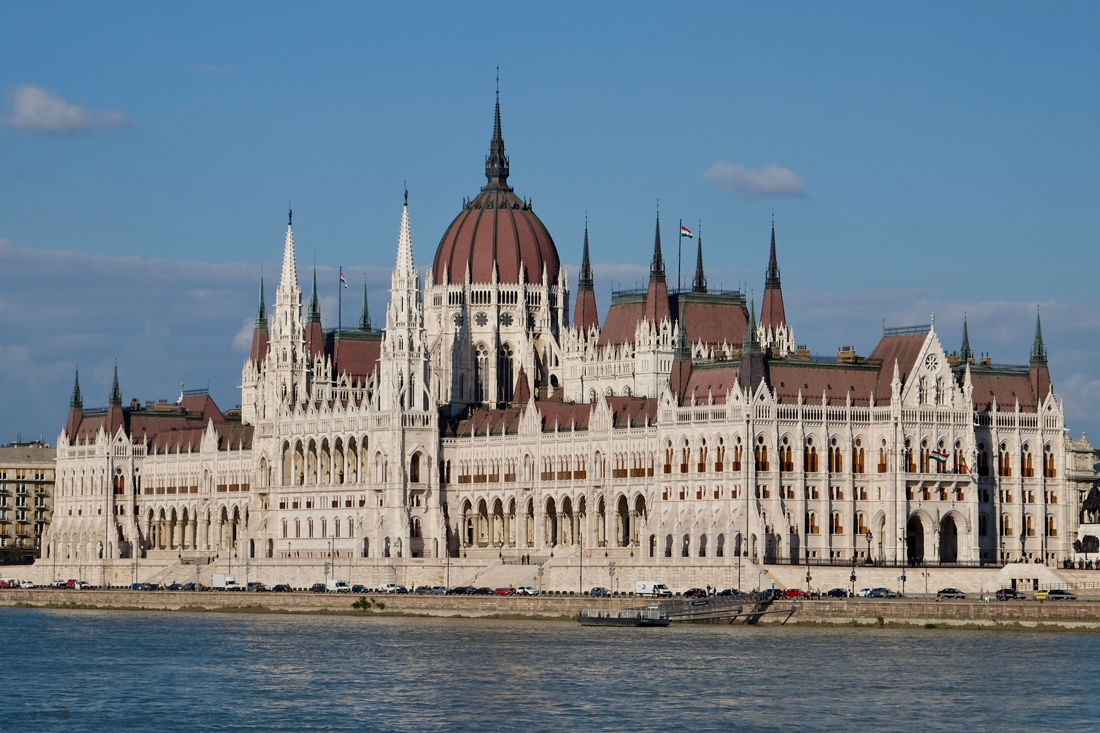
The Budapest Parliament Building is best viewed from a distance.
For people staying a little longer, a picnic on Margaret Island, with its dense trees, manicured gardens, vast network of paths and musical fountains may just be the best way to spend an afternoon. And on the other side of the city is the Citadella on Gellért Hill, where you can pay for a tour, but really you’re better off soaking up the free views outside on your own steam.
How to actually spend Forints in Budapest
Predictably there are some occasions when you may want to part with some cash in Budapest.
Dohány Street Synagogue is Europe’s largest, and the world’s second largest, and is probably worth the entry fee (R175) based on that record alone. But the synagogue’s significance shouldn’t be overshadowed by this fact, and the adjoining Jewish Museum and mass graveyard provide moving insight into the country’s troubled past.
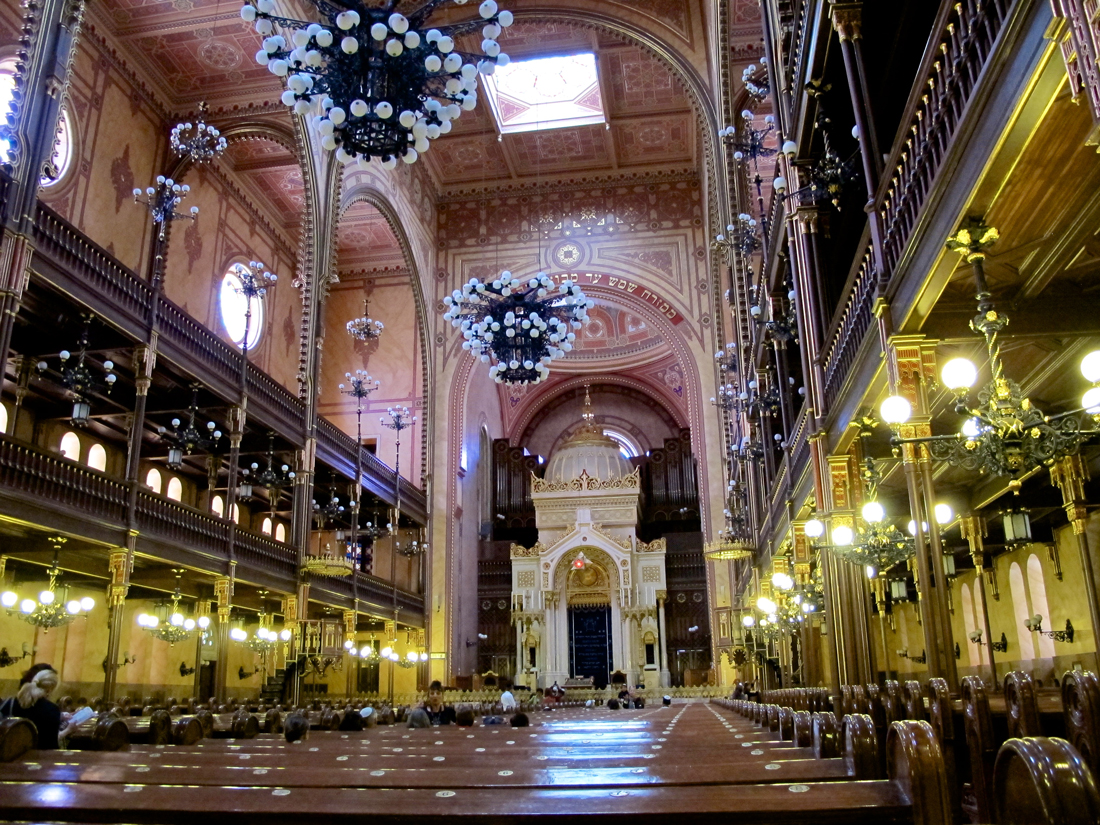
Dohány Street Synagogue.
As too does the sobering House of Terror (R87), a museum that highlights the country’s two oppressive terror regimes at the hands of the Nazis and the Soviets, and the situations that preceded and followed them.
Budapest also pays homage to the famous wartime photographer Robert Capa in several museums. Two that stand out, The Robert Capa Contemporary Photography Centre and Mai Manó House cost just R65 each to enter.
The final thing worth splurging on in Budapest is a thermal bath. Ignore Budapest’s younger population when they snigger at your interest in lolling about in tepid waters with octogenarian fatties playing chess. This is the without doubt the most relaxing way to spend an afternoon, and if you choose right, you might just feel as if you’ve ventured back in time to that distant Hungarian empire you’d built up in your mind. You’ll find various baths dotted throughout the city, but my money (well, R220 of it) is on the beautiful Széchenyi – the most picturesque and traditional of the lot.
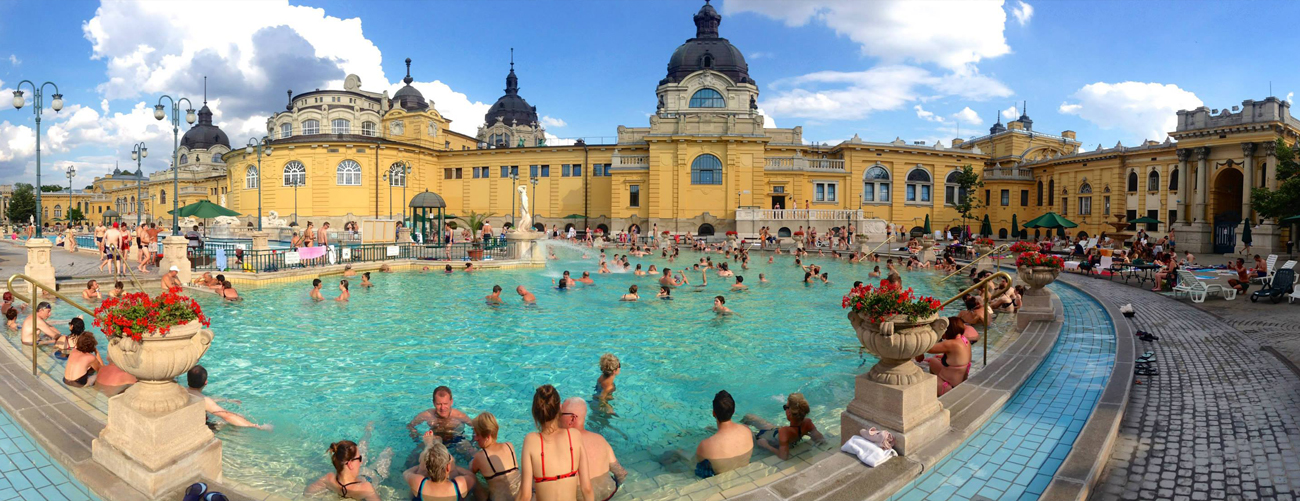
Széchenyi Thermal Baths.
Travel guides and other media tend to paint Budapest as this throwback to a bygone era. The influence of the city’s complex history still offers an intriguing foundation for first-time visitors, but it’s Budapest’s vibrant reinvention that gives it its true edge. And it was this edge that continued to inspire me, and had me vowing to return a fourth time, as my train chugged out of Keleti Station early in the morning six days later.









